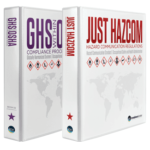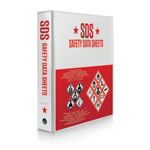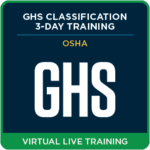
Europe has a new Classifications in town for (EU) 1272/2008
As of December 19, 2022 (EU) 1272/2008 – classification, labelling, and packaging of substances and mixtures (CLP) new hazard classifications to its regulations. These aren’t considered to be GHS hazards but are considered to be supplemental hazards. The new classifications will revolve around hazards associated with endocrine disruptors. As it stands you can add these hazards to your SDS however, you won’t see any mention of it in the guidance document. The guidance document is rumored to be updated in the Spring of 2024.
Endocrine disruptors have been a concern for a long time and are being studied by many regulatory bodies around the world. Even the National Toxicology Program is evaluating endocrine disruptors in different chemicals found in pesticides, perfluorinated chemicals, and components of flame-retardants. An endocrine disruptor is a substance or a mixture that alters one or more functions of the endocrine system consequently causing adverse effects in an intact organism, its progeny, populations, or subpopulations. This basically means that it can lead to disorders such as birth defects, developmental, reproductive, or neurodevelopmental disorders, cancer, or diabetes.
Table 1 shows how the classification will function based on the criteria for CLP. Basically, one classification relates to human health and the other relates to environmental hazards. Table 2 shows the cut-off limits.
| Endocrine Disruptor (Human Health/Environmental) | |||
| Category | Description | Criteria | Cutoff Limits |
| 1 | Known or presumed endocrine disruptors for human health |
Based on: A) Human data Should meet the following criteria: a) Endocrine activity However, where there is information that raises serious doubt about the relevance of the adverse effects to humans, classification in Category 2 may be more appropriate. |
≥0.1 % |
| Known or presumed endocrine disruptors for the environment. | |||
| 2 | Suspected endocrine disruptors for human health. |
If the criteria fulfill the following: a) There is evidence of |
≥ 1% |
| Suspected endocrine disruptors for the environment. | |||
As said earlier these will not be typical Hazard and Precautionary codes, instead are considered Supplemental Statements which will be displayed as follows:
| Category 1 | Category 2 | |
| Signal Word | Danger | Warning |
| Human Hazard Statement | EUH380: May cause endocrine disruption in humans | EUH381: Suspected of causing endocrine disruption in humans |
| Environment Hazard Statement | EUH430: May cause endocrine disruption in the environment | EUH431: Suspected of causing endocrine disruption in the environment |
For substances, these changes will start on May 1, 2025. However, if substances were labelled prior to this date, a transitional period takes precedence, and relabelled should be done before November 1, 2026. Mixtures are also going to follow a transitional period. For new products, this classification must be implemented on May 1, 2026, and for existing mixtures, you have until May 1, 2028, to include the new hazard classifications.
ICC Compliance Center has a team of full-time regulatory specialists who have years of experience and are certified/recognized in their field of expertise. Contact us about authoring, reformatting, updating, and translating your SDSs. Ask us your tough questions by calling 888.442.9628 (USA) or 888.977.4834 (Canada).
Stay up to date and sign up for our newsletter!
We have all the products, services and training you need to ensure your staff is properly trained and informed.
 Just HazCom and GHS Just HazCom and GHSWithin OSHA Bundle |
 Safety Data Sheet Safety Data Sheet(SDS) Services |
 OSHA/WHMIS/GHS OSHA/WHMIS/GHSTraining Courses |
References:
https://www.niehs.nih.gov/health/topics/agents/endocrine/index.cfm
https://www.cirs-group.com/en/chemicals/new-hazards-classes-introduced-for-clp-regulation
Regulation (EC) No 1272/2008 Annex I Part 3






 ICC USA
ICC USA ICC Canada
ICC Canada